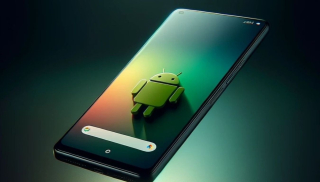eSIM or embedded SIM is the new buzzword which has started making rounds in the world of smartphones. Follow along with this article as we explore this topic today.
For quite some time now, we have seen a lot of changes and improvements that have occurred in the world of smartphones. One thing that hadn’t changed much is the Subscriber’s Identity Module (aka SIM) being used as a key to hop onto the services provided by the telecom service providers. Now, a new concept is trying to innovate the technology which goes into SIM chips.
What is eSIM?
Embedded SIM technology is basically a new technology which is motivating different telecom carriers into using one standard chip as a SIM card. eSIM cards would be soldered right onto a dedicated chip port on the smartphone’s circuitry and it would stay there permanently while users would be able to port between the telecom operators from the software. Apple also just rolled out the eSIM technology with the second SIM option of its latest smartphones.
What countries and what telecom operators support it?
Given below is a list of telecom operators which currently support this new eSIM technology.
Austria
- T-Mobile
Canada
- Bell
Croatia
- Hrvatski Telekom
The Czech Republic
- T-Mobile
Germany
- Telekom
- Vodafone
Hungary
- Magyar Telekom
India
- Airtel
- Reliance Jio
Spain
- Vodafone Spain
The United Kingdom
- EE
USA
- AT&T
- T-Mobile
- Verizon
What are some of the Pros of this technology?
eSIMs are ahead of the curve when compared with the traditional SIM chips. With the new eSIM, users don’t have to worry about their chips getting worn out or stolen – because the SIM now is embedded well on the circuitry of smartphones. Moreover, this technology encourages telecom operators to use one standard SIM chip, so the users don’t have to physically change the SIM every time they need to switch the carrier.
This makes the network switching more flexible and the users would be able to do this just on a tap. These are the real benefits for it. Apart from these, there are a couple of other benefits too. For example, the smartphone manufacturers will now have more flexibility to play with the space on their smartphone as the SIMs then will not have to be removed time and again.
Any Cons?
As far as the Cons of this new technology are concerned, there aren’t any noticeable ones. Well, because, eSIMs are being introduced to innovate the current SIM space and fill the void which exists between technology and current industrial practices. However, having a permanent eSIM on one’s smartphone would mean that now a smartphone would be mostly connected to the telecom services provider and be more traceable – unlike previously when users could just physically eject the SIM out and start using the smartphone as an iPod whenever they needed to.
Another issue could be lack of telecom providers who are currently onboard this facility. The number is quite less but it is expected to grow over time. In Pakistan, there are currently no telecom providers which support this technology. This could be another issue, for the rest of it, the image seems pretty alright.
Do you have anything to add? Share with us in the comments section below.











